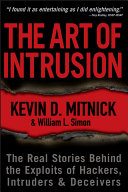

The book delves into the psychology of hackers, emphasizing that understanding their mindset is crucial for preventing cyber intrusions. Hackers often possess a unique blend of curiosity, creativity, and technical skill that drives them to explore systems and networks. They see challenges as puzzles to be solved, which can lead to innovative solutions but also to malicious activities. The book illustrates various hacker motivations, including financial gain, political activism, revenge, and sheer curiosity. By gaining insight into these motivations, organizations can better anticipate potential attacks and develop more effective security measures. The authors argue that security professionals must think like hackers to understand their tactics, techniques, and procedures (TTPs). This chapter encourages readers to adopt a proactive approach to cybersecurity, emphasizing the importance of threat modeling and risk assessment. By understanding the hacker mindset, organizations can create a culture of security awareness, where employees are trained to recognize potential threats and respond appropriately.
Continue readingOne of the most compelling aspects of 'The Art of Intrusion' is its collection of real-world case studies that illustrate how various cyber intrusions have occurred. These narratives provide readers with concrete examples of how hackers exploit vulnerabilities in systems and networks. Each case study highlights different methods of intrusion, such as social engineering, phishing, and exploiting software flaws. The authors present detailed accounts of notable hacks, including those against major corporations and government agencies. These stories not only serve to educate readers about specific attack vectors but also underscore the importance of vigilance and preparedness in cybersecurity. The case studies also reveal the often-overlooked human element in cybersecurity breaches, demonstrating how insider threats and employee negligence can contribute to vulnerabilities. By analyzing these incidents, readers can learn valuable lessons about the importance of robust security protocols, employee training, and incident response planning.
Continue readingThe book emphasizes that a strong security culture within an organization is essential for effective cybersecurity. A security culture involves creating an environment where security is prioritized, and employees at all levels understand their role in protecting sensitive information. The authors argue that security should not be solely the responsibility of the IT department; rather, it should be a collective effort that involves everyone in the organization. This chapter discusses strategies for fostering a positive security culture, including regular training and awareness programs, open communication about security issues, and encouraging employees to report suspicious activities without fear of reprisal. The authors also highlight the significance of leadership in promoting a security-first mindset. By establishing clear policies and demonstrating a commitment to security at the executive level, organizations can create a culture where employees are more likely to take security seriously and actively participate in safeguarding their systems.
Continue readingWhile the human element is critical in cybersecurity, the book also discusses the role of technology in protecting systems and networks. It covers various tools and technologies that can help organizations defend against cyber threats, such as firewalls, intrusion detection systems, and encryption. However, the authors caution that technology alone is not a panacea; it must be complemented by effective policies and procedures. They emphasize the importance of staying informed about emerging technologies and trends in cybersecurity, as the threat landscape is constantly evolving. The chapter also addresses the challenges of implementing and maintaining security technologies, including the need for regular updates, patches, and configuration management. By understanding the technological landscape, organizations can make informed decisions about their security investments and ensure that their defenses remain robust against evolving threats.
Continue readingThe book outlines the critical importance of having a well-defined incident response plan in place. Cyber intrusions can happen to any organization, and how they respond can significantly impact the outcome. The authors emphasize that an effective incident response plan should include clear procedures for identifying, containing, eradicating, and recovering from an intrusion. They discuss the roles and responsibilities of the incident response team and the importance of communication during an incident. Additionally, the book highlights the need for post-incident analysis to learn from breaches and improve security measures. By conducting thorough post-mortems, organizations can identify weaknesses in their defenses and make necessary adjustments to prevent future incidents. The chapter reinforces the idea that preparation and practice are key components of successful incident response, advocating for regular drills and simulations to ensure that teams are equipped to handle real-world scenarios.
Continue readingIn addition to technical and procedural aspects of cybersecurity, the book addresses the legal and ethical considerations surrounding hacking and cybersecurity. The authors discuss the complex landscape of laws and regulations that govern cybersecurity practices, including data protection laws, breach notification requirements, and intellectual property rights. They emphasize the importance of compliance and the potential legal ramifications of failing to protect sensitive information. The chapter also explores the ethical dilemmas faced by security professionals, such as the balance between privacy and security, and the responsibilities of organizations to protect user data. The authors encourage readers to consider the ethical implications of their actions and decisions in the field of cybersecurity, advocating for a responsible approach to security that respects individual rights while safeguarding organizational assets.
Continue readingThe final chapter of 'The Art of Intrusion' looks ahead to the future of cybersecurity, discussing emerging trends and potential challenges. The authors highlight the increasing sophistication of cyber threats, including the rise of state-sponsored attacks, ransomware, and advanced persistent threats (APTs). They also address the growing importance of artificial intelligence (AI) and machine learning in both offensive and defensive cybersecurity strategies. The chapter encourages organizations to remain agile and adaptable in their approach to security, as the threat landscape continues to evolve. The authors advocate for ongoing education and awareness to keep pace with new developments in technology and tactics. By staying informed and proactive, organizations can better prepare for the challenges that lie ahead and enhance their resilience against cyber threats.
Continue reading